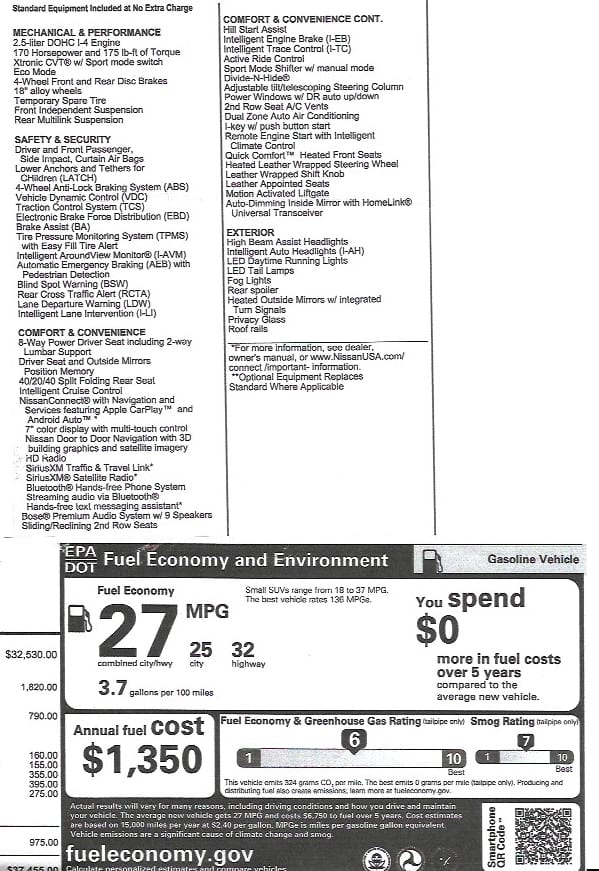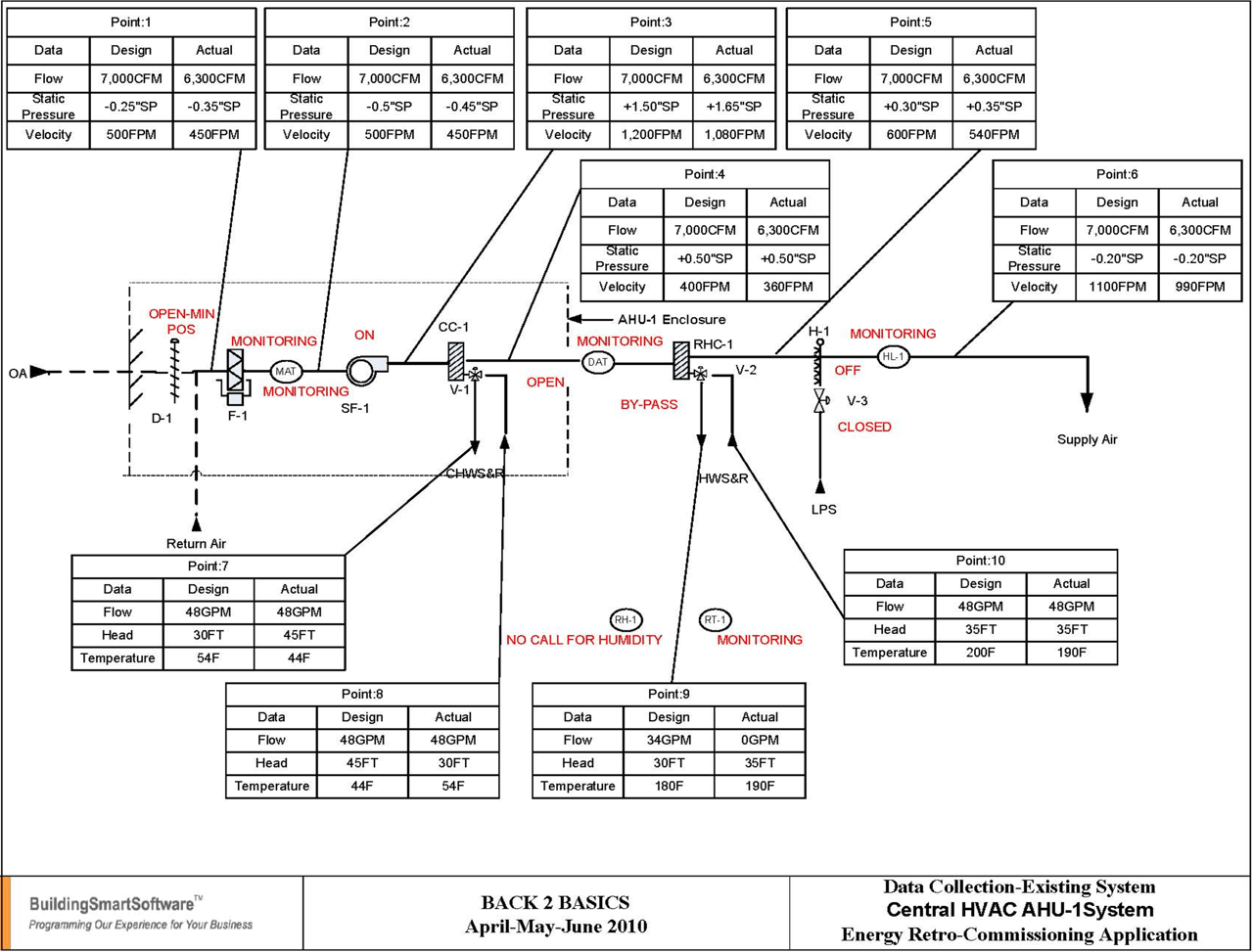

feature
A Job 'Not' Well Done
A project is not compliant when commissioning and testing, adjusting, and balancing are not completed together to industry standards.
Here are six important goals, in no particular order, building owners, building managers, and facility managers will always want to achieve:
- Optimum utility, operation, and maintenance annual budgets to actual performance.
- Continuous occupant healthy environment success.
- Continuous occupant comfort success.
- Continuous energy conservation initiatives.
- Continuous commitment to preserving the environment.
- Providing a safe and secure building.
These are important goals, but they're not achievable without the contribution of third-party certified testing, adjusting, and balancing (TAB) firm. How so? The building industry has recognized third-party commissioning (Cx) is necessary to ensure the building owner’s building program will fulfill the project’s design intent document, but that is only the half of it. The Cx agent is responsible to monitor and report on the HVAC building systems and confirm the engineer’s design criteria and the contractor’s installation have met the contract document compliance. However, Cx agents overseeing of the equipment/system startup and individual systems' automatic control demonstrations often fall short of delivering a complete HVAC system performance verification.
Building Projects Are Like New Cars
Would a new car owner accept his or her purchase if the vehicle came driving out of the showroom sputtering and backfiring? Not likely. Determining whether a new HVAC system is sputtering and backfiring is not as obvious as this vehicle that was not operating per the design intent. My car analogy is further demonstrated in Figure 1. This sales sticker documents the features — aka the design intent document (DID) — and lists the equipment's features, e.g., mechanical and performance, safety and security, etc. In this analogy, the Cx agent — as having been engineered and installed in the automobile per the DID — is responsible to confirm each electronic feature, such as the tire pressure monitoring system (TPMS), performs through system demonstration as designed.
FIGURE 1: A sample new car window sales sticker.

But, who confirms the miles per gallon (mpg) statement printed on the car’s window sticker, which states the automobile operates at 27 mpg (combined 25 mpg city/highway and 32 mpg highway) is accurate? My answer to this analogy question is that it is the TAB technician who is responsible for tuning up the car — or, in our sake, the central air system’s minimum and maximum supply airflows.
Going back to the 1970s, the HVAC engineering community has been specifying TAB water and air systems be balanced in accordance with one of the following TAB organizations procedures: Associated Air Balance Council (AABC); Testing, Adjusting, and Balancing Bureau (TABB); or National Environmental Balancing Bureau (NEBB), but, unfortunately, these industry standards are not followed to their full intent. Unlike third-party commissioning, TAB services are usually competitively bid by HVAC contractors, where the TAB firm will be responsible to the HVAC contractor first and the contract documents second. The HVAC firm will be a subcontractor to the primary contractor, moving the TAB firm further away from the owner and design engineer.
Until I had taken the NEBB certification test (classroom and field tests), I was as guilty as many consulting engineers truly enforcing the specification within the contract document specification, believing the TAB final report was complete. Without researching deeper into these organizations’ TAB procedural manuals, pre-TAB technician tasks did not get documented and submitted to the design engineer. An example of a procedure falling through the cracks is the common omission of TAB technicians creating a system flow diagram prior to going to the job site to begin the final water or air balancing (Figure 2 provides a sample central air system flow diagram). Completing these system flow diagrams and submitting them within the TAB shop drawing submittal to the designer engineer should be part of the organizations, such as Sheet Metal and Air Conditioning Contractors’ National Association's (SMACNA's) TAB Procedural Guide. This flow diagram would include points where the TAB technician should take airflow and static pressure readings. The same would occur with a chilled water or hot water system schematic water system layout.
FIGURE 2: Sample Central Air System Flow Diagram
Image courtesy of SMACNA

Achieving the Goals
Referring back to the six important goals noted above, commissioning can contribute to achieving these objectives, but these goals cannot be reached without the TAB firm being empowered to follow their company’s certified procedures. To empower is to require the TAB firm to be independent from the contractors and work in parallel with the Cx agent. Just like the Cx agent is hired by the building owner, the TAB firm should also be hired by the building owner or hired as a Cx-TAB team to perform the overview with the Cx agent observing the final system demonstration, and the TAB firm performing the actual air and water balancing. Just like the Cx agent works with the design team and the construction team, the TAB firm would be empowered to do the same, especially in the construction phase so that the TAB firm representative/technician coordinates the TAB scope of work noted in this image, available on the Building Smart Software website. A parallel track of commissioning and TAB process flow diagrams provides an overview of the design and construction phases with field visit reports and the implementation of TAB procedures as specified in the contract documents.
Beginning in the design phase, the TAB firm should complete the following in sync with the Cx agent performing the design phase commissioning requirements:
- Design review for TAB-ability point and accessibility review.
- Develop system flow diagrams with “design-to-actual” data (air and water) that will be completed in the construction phase (A sample is noted in Figure 2).
- Equipment and terminal unit “design-to-actual” data (air and water) that will be completed in the construction phase.
- Establish the room-by-room air (and/or water) balance sheet and associated space pressure data as well as overall floor-balanced calculation, e.g., minimum system flow, constant flow, and variable flow with associated floor space pressure data.
- Draft the TAB specification similar to the Cx agent drafting the commissioning specification requirements.
- Ensure the document design phase section of the final TAB report is in sync with the Cx agent completing the design phase section of the final commissioning report.
In the construction phase, while the Cx agent is completing his or her contract scope of work, the TAB firm should be performing the following:
- Continue to build the final TAB report through documentation.
- Attend job site meetings.
- Observe installation, e.g., perform sheet metal distribution pressure testing, etc.
- Complete field reports per each system.
- Complete equipment pre-startup and startup checklists.
- Complete a system distribution checklist.
- Complete air and/or water balancing in sync with the automatic control field technician(s).
- Complete the TAB firm’s certification forms, e.g., room-by-room and terminal-by-terminal design-to-actual data readings.
- Complete the system flow diagram sheets.
- Complete the final tab report.
A Culture Change
Historically, more often than not, the TAB firm selection has been completed through a “request for bid” by the HVAC contractor. Seldom will a project owner or owner representative solicit TAB bids. As a result, TAB firms are often perceived as commodities based on price. When done this way, the DID compliance will be in jeopardy, as the construction phase begins and the TAB firm is not a third party to the building owner along its counterpart, the commissioning agent. Think about it: Cx and TAB are the two key components for assuring the design intent of the HVAC will be met, and while the Cx agent is in direct contact with the owner or owner representative, the design engineer, and the primary contractor or construction manager, the TAB firm is usually three levels removed from answering to the HVAC contractor that is adhering to the primary contractor. There is no direct contact between the TAB firm and the designer or owner.
It’s worth noting this recommended culture change will come at a cost, because the TAB firm will begin its work in the design phase and follow through with adherence to the TAB certification requirements, ending with the final TAB report at the end of the construction phase. This premium will be approximately 5%-10% more than the standard TAB bid, where the TAB firm begins its work in the construction phase, e.g., $2,500-$10,000 premium on a $50,000 TAB cost to be completed in the construction phase. The return on investment delivered when a third-party TAB firm works in sync with the Cx agent should be less than a one-year return on investment when compared to how the HVAC systems could be sputtering and backfiring with no one’s knowledge leaving the showroom. More importantly, the TAB work will be performed in strict accordance with TAB procedural industry standards.
Summary
Many may struggle with this culture change to TAB professional services when it is recommended the TAB process begin in the design phase in sync with the Cx agent starting his or her work in the design phase. But, just like an automobile that has all its electronics commissioned and can be easily demonstrated to the new buyer that it will operate within the “city-highway” predicted MPG, the third-party TAB process will assure the building owner, building manager, and facility manager those six goals will be reached based on:
- Optimum utility, operation, and maintenance annual budgets to actual will be achieved. The systems will have been demonstrated to the Cx agent, along with the facility personnel observing each sequence of operation, that the TAB firm had adjusted and documented each sequence’s air and/or water flow, pressure readings, and pressure drops. It will be further demonstrated the equipment is delivering the specified quantities and that these tuned-up systems, including the terminal units, will avoid the wasting of energy and its associated operating cost.
- With tuned-up central air systems, occupant health can be assured based on the engineer’s DID for air changes and air filtration efficiency.
- With tuned-up central air and water systems, occupant comfort can be assured based on the DID. Occupant complaints attributed to room temperature and ventilation can be minimized.
- Just like the automobile that isn’t sputtering and backfiring, the tuned-up central air and water systems in sync with the building automation system will assure all parties the designed HVAC will provide continuous energy conservation via efficiency of operation.
- With efficient system performance and associated energy consumption, continuous commitment to preserving the environment can be assured especially if the building program included the investment to achieve net-zero energy status.
- With occupant health achieved and the incorporation in engineered safety systems, e.g., engineered smoke evacuation sequence of operation, then a safe and secure building can be assured.
When commissioning and TAB are completed together following industry TAB procedural standards, then the equipment’s performance will commence with a job well done.
References
- Tomorrow’s Engineer, June 1999 column
- Tomorrow’s Engineer, “Jump-Starting the TAB Process” December 2005
- Tomorrow’s Engineer, "More on Jump-Starting the TAB Process" February 2006
- Tomorrow’s Engineer, "Third-Party TAB" August 2007
- Tomorrow’s Environment, “One Small Step for the TAB Industry" November 2008
- Tomorrow’s Environment, “TAB Consulting Firm, LLC" August 2010
- Tomorrow’s Environment, “Another Niche Business-Consulting 3rd Party TAB” October 2016
- “Third Party TAB In Sync With Third Party Commissioning,” January 2010
Howard McKew, P.E., FASHRAE
Reach Howard McKew at hmckew@bss-consultant.com or at www.buildingsmartsoftware.com
Use this handy shortcut to see years of Howard’s opinions and tips in this column and other articles.

Lead photo [serts][E+] via Getty Images